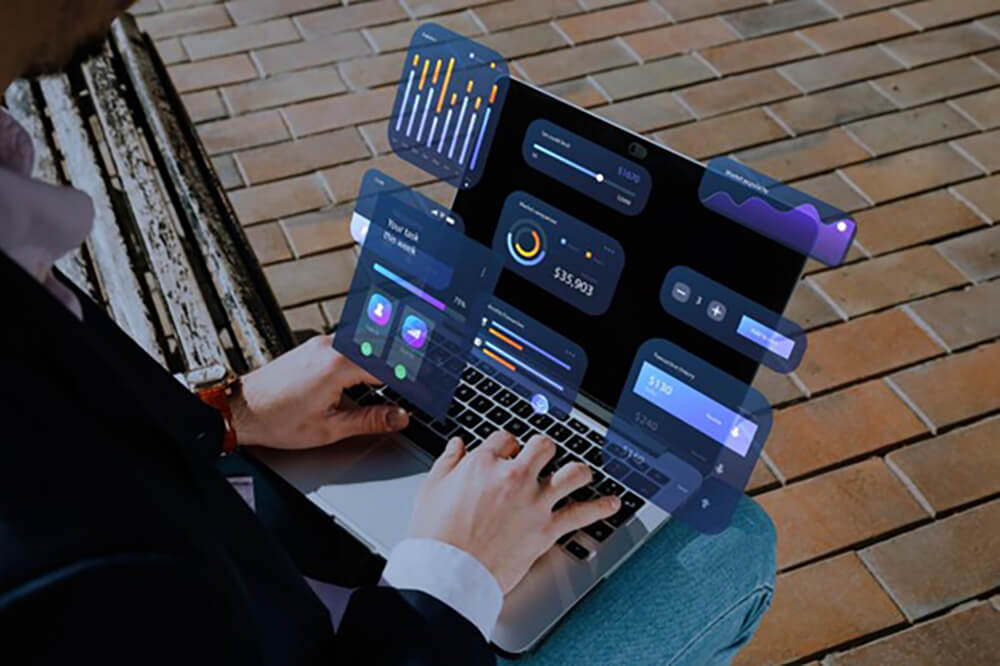I’ve been observing the technology space change for many years, and to be honest with you, I’ve never seen two technologies complement each other quite the way AI and blockchain do. Yes, we always hear about the “next big thing,” but this pairing is different. It’s not marketing hype – it’s actually revolutionizing the way we construct applications. Consider this: AI is amazing at digging through huge volumes of information and discovering patterns we’d never be able to see ourselves. Blockchain, meanwhile, builds this bulletproof environment in which data can’t be touched after it’s written down. Combine them, and you have apps that are both amazingly intelligent and totally secure.
What Makes This Combination So Special?
Here’s the thing – blockchain and AI cure each other’s worst issues. AI requires gazillions of good data to function effectively, and blockchain offers just that: data that’s vetted, secure, and un-fakeable. At the same time, blockchain tends to be fairly inflexible and rigid, while AI overlays this layer of intelligence that makes it all more responsive and dynamic.
I’ve witnessed in person how this works out in actual uses. Consider the case of healthcare. You can have securely stored patient records on a blockchain (so they can’t be tampered with or hacked), while AI scrutinizes patterns in thousands of patients to foretell health problems before they arise. It’s being able to have the best of both worlds cooperate.

The Real Benefits (Not Just the Marketing Speak):
Let me dissect what this really means for companies, because the advantages extend far beyond what you may think:
Security That Actually Works:
We’ve all heard of data breaches and privacy hell. With blockchain, once you record something, it’s there forever and cannot be altered. Mix in AI, and you have systems that can detect suspicious behavior in real-time. I’ve done this with financial institutions using this model, and their fraud detection rates have been phenomenal.
Automation That Makes Sense:
Smart contracts are all flash, but they’re just programs that execute automatically when specific conditions are fulfilled. The rub is, classical smart contracts are quite stupid – they can only perform precisely as they’re programmed to perform. But when you incorporate AI, these contracts are intelligent. They can learn from historical transactions and make improved choices over time.
Decision-Making Based on Real Data:
This is where it really gets interesting. Because blockchain builds this tamper-proof record of all that’s happening, AI can safely study past data with certainty that it’s correct. I’ve watched supply chain businesses use this to forecast shortages weeks in advance, simply by reading patterns in their blockchain records.
Transparency Without Compromise:
Something I like best about this pairing is the way it mixes transparency with privacy. Everybody can see that there were transactions and check they are valid, but AI can study patterns without revealing personal data.
How This Is Actually Changing App Development:
The process of development itself is changing. Rather than developing apps which simply store information in old databases, developers are building applications that reside on distributed networks. It’s uglier in some respects, but more robust.
I recall doing a project where we had to rethink our strategy from scratch. Rather than having a single server in the middle that could fail and take everything down with it, we created an app that functioned on dozens of nodes of blockchain. The AI pieces could read data from any node and make decisions based on the whole picture.
Unhackable Data Storage:
Old apps hold everything in one location, which is susceptible. Blockchain distributes data across many locations, and each bit is encrypted linked to the rest of them. Attempt to modify one bit, and the entire system senses something’s amiss.
Smart Contracts That Actually Learn:
The initial smart contracts were akin to super pricey calculators – they could adhere to rules, but not change. Now we’re creating contracts that become more intelligent with time. They learn from every transaction and improve for optimal performance.
Trustworthy AI:
Here’s something few people know: one of the most serious issues with AI is that you often can’t audit why it made a decision. But when the AI is operating on blockchain data, every move of its logic can be tracked and audited. This is gigantic for sectors such as medicine and finance where you have to demonstrate how decisions were reached.
The Money Side of Things:
I won’t mince words – developing these applications costs money. But the opportunity in the market is huge. Latest estimates indicate AI reaching $1.8 trillion by 2030, with blockchain reaching $163 billion in 2027. That’s not just huge numbers; it’s genuine demand from companies that require these solutions.
I’ve watched startups raise millions based on the hope of putting these technologies together and doing it well. But more importantly, I’ve watched traditional companies save millions by building AI-blockchain solutions that replace processes that previously took dozens of people.
Business Models That Actually Work
Every AI-blockchain combination doesn’t make sense for business, but I’ve seen several models that consistently generate revenue:
Subscription-Based Services:
Firms such as SingularityNET have managed to bundle AI services on blockchain platforms and bill clients on a monthly basis. It makes sense because companies receive constant access to better AI capabilities without the need to develop everything themselves.
Token Economics:
This is where it gets innovative. Rather than using standard payment systems, a few apps build token economies for themselves. Users get tokens for providing data or computational resources, and later use the tokens to purchase AI services. Axie Infinity demonstrated that this can be done for gaming, and we’re now seeing it being applied to other sectors.
Data Marketplaces:
This one’s really intriguing. Businesses are able to sell their data securely on blockchain platforms, while AI adds value by delivering insights and analysis. Healthcare and finance businesses are particularly keen on this model since they can charge for their data without sacrificing privacy.
What These Apps Actually Need to Work:
Technically speaking, there are a few things that are non-negotiable:
- Distributed Storage Systems: You can’t simply take a standard app and just put it on a blockchain. The whole data architecture must be rewritten to function with multiple nodes and still maintain consistency.
- Predictive Capabilities: The AI elements must be able to do more than look at past data – they must be able to predict future trends and behaviors. This demands sophisticated machine learning models that can learn to recognize new patterns over time.
- Automated Execution: Smart contracts form the foundation of such systems. They must process advanced business logic without compromising security and performance.
- User-Friendly Interfaces: No matter all the advanced technology behind them, the user interface must be easy to use. Natural language processing facilitates this, enabling individuals to communicate with such systems in plain English instead of technical commands.
The Development Reality:
Developing these apps is complicated, and the process continues to mature. Here’s what I’ve learned from actually building it:
- Start Small and Specific: Don’t solve all your problems at once. Choose one particular use case and create a solution that performs extremely well for that specific problem.
- Choose Your Platform Carefully: Ethereum is mainstream but costly. Solana is quicker but newer. Hyperledger is enterprise-level but intricate. Depending on what you’re building is the only factor.
- nvest in the AI Framework Early: The AI pieces are slow to train and optimize. Don’t make this an afterthought – it has to be at the center of your development effort from the start.
- Test Everything Extensively: With regular apps, bugs are a nuisance. With blockchain apps, bugs can be costly and even impossible to resolve. Testing is not optional.
What It Actually Costs:
This is the reality of development costs based on projects that I’ve worked on:
- Planning and research: $3,000 $10,000
- Frontend development: $8,000 $20,000
- Backend and blockchain integration: $15,000 $35,000
- AI model development and training: $10,000 $25,000
- Smart contract coding: $8,000 $15,000
- Security audits and testing: $5,000 $12,000
- Deployment and first-year maintenance: $3,000 $8,000
You’re talking anywhere from $50,000 to $125,000 for a good app, depending on sophistication. Yes, it costs a lot, but the companies I’ve done work for usually break even within 18-24 months through operational efficiencies and new revenue streams.
Where This Is All Heading:
The pairing of blockchain and AI is no longer a mere technical fascination – it’s turning into indispensable infrastructure for companies wishing to remain competitive. We’re witnessing deployment in healthcare, finance, the supply chain, as well as entertainment.
The software we’re developing today will look crude in comparison to what is on the horizon. As both technologies evolve and become more streamlined to incorporate, we’ll find more companies embracing these solutions not because they’re revolutionary, but because they’re merely the optimal solution for large-scale problems.
If you are thinking of building an AI-fueled blockchain app, the time to do so is really now. The technology is advanced enough to be trustworthy, yet early enough that you can still carve out a competitive edge. Just keep in mind – don’t worry about using new-fangled technology for its own sake; worry about solving actual problems instead.



